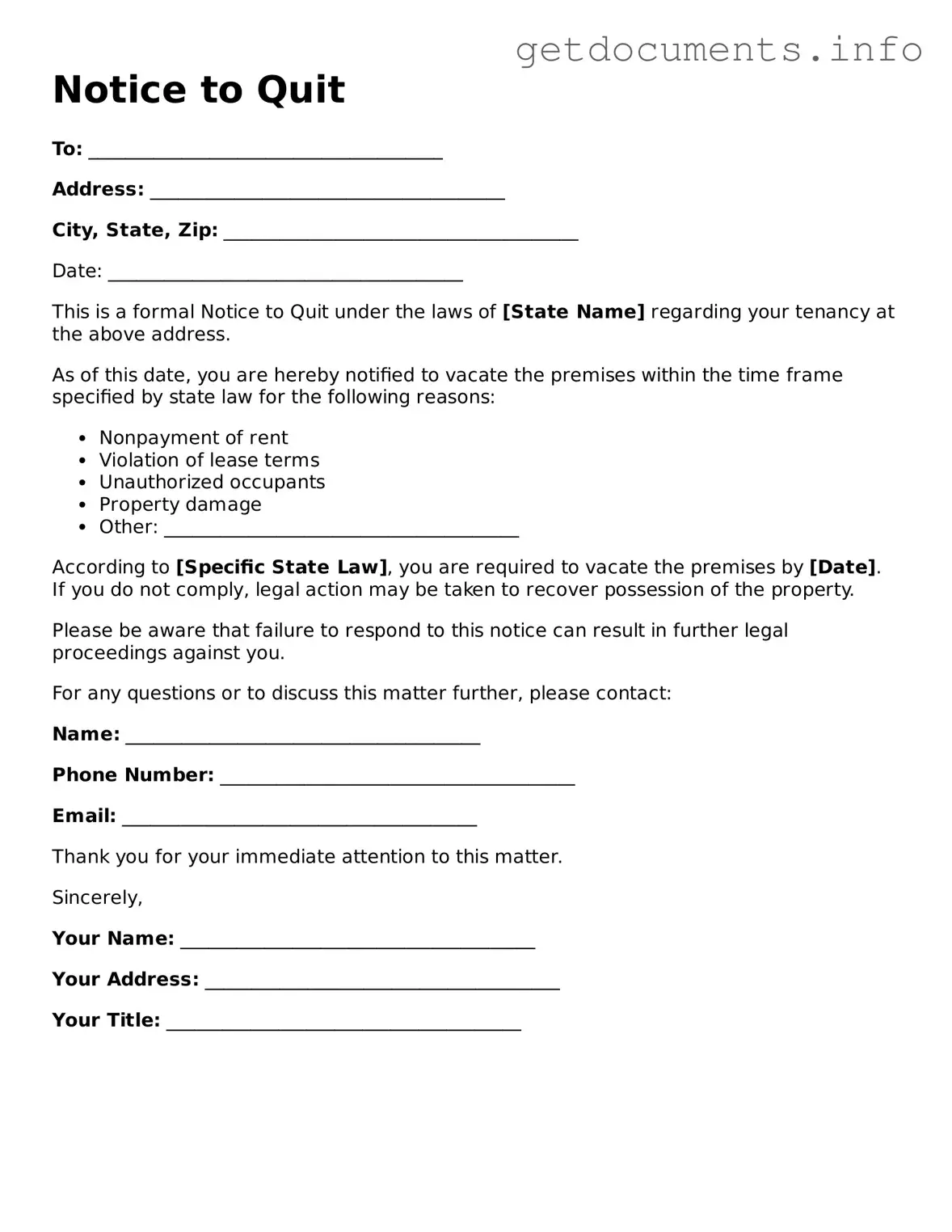The Notice to Quit form serves as a crucial document in the landlord-tenant relationship, particularly when a landlord seeks to terminate a rental agreement. This form outlines the intent of the landlord to reclaim possession of the property, providing tenants with a clear understanding of their situation. It typically includes essential details such as the address of the rental property, the reason for termination, and the timeframe in which the tenant must vacate the premises. Depending on the jurisdiction, the notice may specify the type of lease violation or the expiration of a lease term that necessitates this action. It is important for both parties to understand the legal implications of the Notice to Quit, as it sets the stage for any subsequent legal proceedings. By adhering to the proper procedures and timelines outlined in the form, landlords can ensure a smoother transition, while tenants can be better prepared to respond to the notice. This form not only protects the rights of landlords but also provides tenants with the opportunity to address any issues before facing eviction, fostering a more respectful and informed process for all involved.
